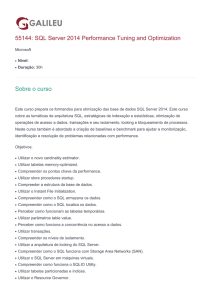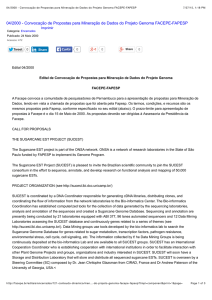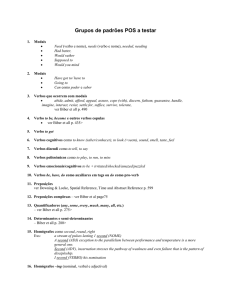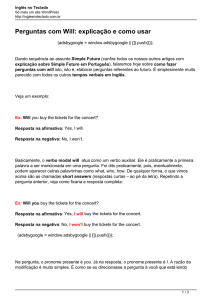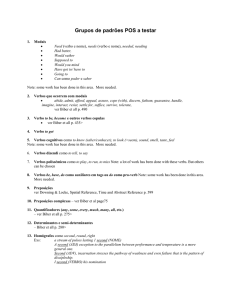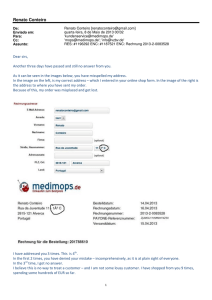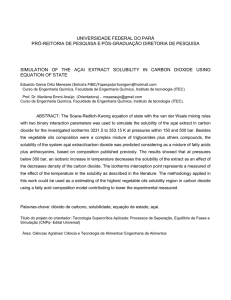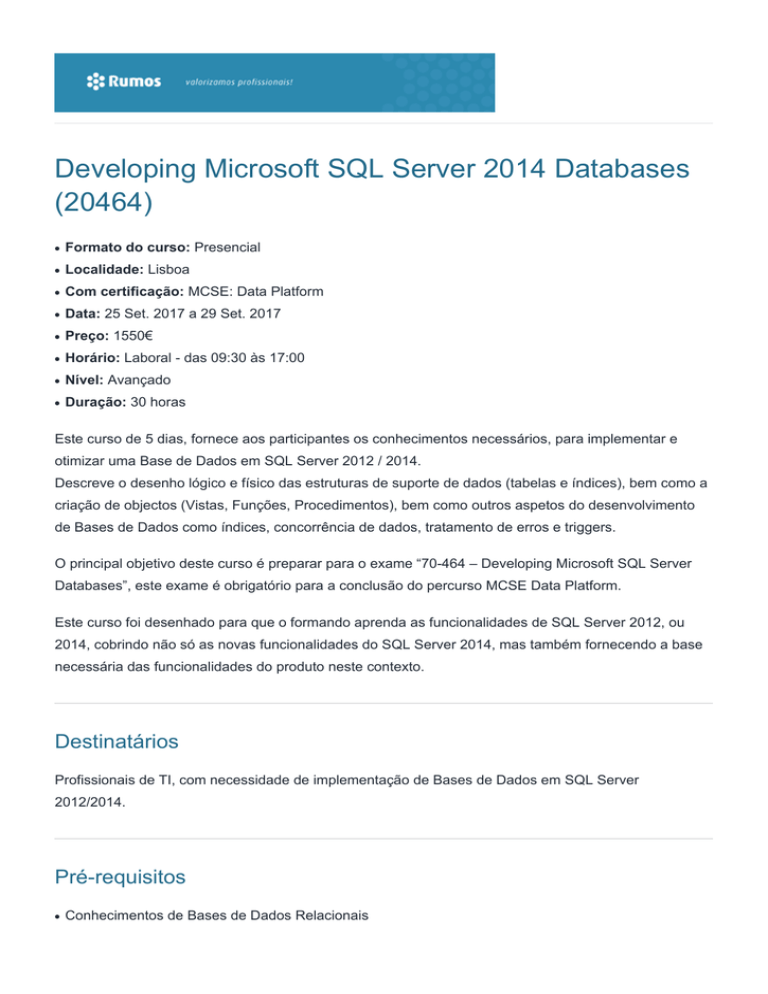
Developing Microsoft SQL Server 2014 Databases
(20464)
●
Formato do curso: Presencial
●
Localidade: Lisboa
●
Com certificação: MCSE: Data Platform
●
Data: 25 Set. 2017 a 29 Set. 2017
●
Preço: 1550€
●
Horário: Laboral - das 09:30 às 17:00
●
Nível: Avançado
●
Duração: 30 horas
Este curso de 5 dias, fornece aos participantes os conhecimentos necessários, para implementar e
otimizar uma Base de Dados em SQL Server 2012 / 2014.
Descreve o desenho lógico e físico das estruturas de suporte de dados (tabelas e índices), bem como a
criação de objectos (Vistas, Funções, Procedimentos), bem como outros aspetos do desenvolvimento
de Bases de Dados como índices, concorrência de dados, tratamento de erros e triggers.
O principal objetivo deste curso é preparar para o exame “70-464 – Developing Microsoft SQL Server
Databases”, este exame é obrigatório para a conclusão do percurso MCSE Data Platform.
Este curso foi desenhado para que o formando aprenda as funcionalidades de SQL Server 2012, ou
2014, cobrindo não só as novas funcionalidades do SQL Server 2014, mas também fornecendo a base
necessária das funcionalidades do produto neste contexto.
Destinatários
Profissionais de TI, com necessidade de implementação de Bases de Dados em SQL Server
2012/2014.
Pré-requisitos
●
Conhecimentos de Bases de Dados Relacionais
●
Elaboração de Consultas em SQL Server
●
Recomenda-se a frequência do seguinte curso:
❍
“20461 – Querying Microsoft SQL Server” ou conhecimento equivalente
Objectivos
No final da ação de formação os participantes deverão estar aptos a:
●
Conhecer toda a Plataforma SQL Server e suas ferramentas
●
Escolher os tipos de dados corretos na implementação de Tabelas, bem como conversões de dados
●
Conhecer as melhores práticas recomendadas, na implementação de tabelas, via consola ou
Transact-SQL (não cobre particionamento de tabelas)
●
Implementação de constraints PRIMARY KEY, FOREIGN KEY, UNIQUE, CHECK e DEFAULT
●
Determinar a correta utilização de Indices singulares e compostos
●
Criar Tabelas utilizando Heaps ou Clustered Indexes
●
Ler e interpretar planos de execução
●
Construir Non-Clustered Indexes eficazes
●
Desenho e Implementação de Vistas
●
Desenho e Implementação de Stored Procedures
●
Utilizar variáveis e parâmetros de tipo Tabela, bem como da instrução MERGE, na criação de Stored
Procedures com vista a alimentar um Data Warehouse
●
Desenho e Implementação de Funções, de tipo escalar ou tabular, bem como as consequências do
seu uso em termos de performance
●
Resolução de problemas de concorrência no acesso a dados, assim como níveis de isolamento de
dados
●
Tratamento de erros, tradicional e estruturado
●
Desenho e implementação de Triggers de DML
●
Implementação de objetos de .Net (Managed Code) em SQL Server
●
Armazenamento e Manipulação de XML
Metodologia
Pode assistir a este curso de forma:
●
Presencial
Programa
Introduction to Database Development
This module introduces database development and the key tasks that a database developer would
typically perform. After completing this module, you will be able to:
❍
Describe the architecture and editions of SQL Server 2012.
❍
Work with SQL Server tools.
❍
Configure SQL Server Services.
Designing and Implementing Tables
This module explains how to design, create, and alter tables. Also it focusses on working with schemas.
After completing this module, you will be able to:
❍
Design Tables.
❍
Work with Schemas.
❍
Create and Alter Tables.
Ensuring Data Integrity through Constraints
This module explains how to enforce data integrity, and implement domain integrity to maintain high
quality data. Also it focusses on implementing Entity and Referential Integrity. After completing this
module, you will be able to:
❍
Explain the available options for enforcing data integrity and the levels at which they should be
applied.
❍
Implement domain integrity.
❍
Implement entity and referential integrity.
Introduction to Indexing
This module describes the concept of an index and discusses selectivity, density and statistics. It covers
appropriate data type choices and choices around composite index structures. After completing this
module, you will be able to:
❍
Describe core indexing concepts.
❍
Choose appropriate data types for indexes.
❍
Design and implement clustered and nonclustered indexes.
Advanced Indexing
This module explains covering indexes and the INCLUDE clause as well as the use of padding, hints
and statistics. The module also covers the use of the Database Engine Tuning Advisor and index-related
dynamic management views to assess indexing strategies. After completing this module, you will be able
to:
❍
Describe the elements of an execution plan.
❍
Design effective indexing strategies.
❍
Monitor your system to assess the performance of your indexing strategy.
Columnstore Indexes
This module explains columnstore indexes, introduces clustered and nonclustered columnstore indexes,
and discusses considerations for using columnstore indexes. After completing this module, you will be
able to:
❍
Create columnstore indexes
❍
Describe the considerations for updating tables with non-clustered columnstore indexes.
Designing and Implementing Views
This module introduces Views, and explains how to create and manage Views. Also it focusses on the
performance consideration for Views. After completing this module, you will be able to:
❍
Explain the role of views in database development.
❍
Implement views.
❍
Describe the performance related impacts of views
Designing and Implementing Stored Procedures
This module describes the potential advantages of the use of stored procedures along with guidelines on
creating them. After completing this module, you will be able to:
❍
Describe the role of stored procedures and the potential benefits of using them.
❍
Work with stored procedures.
❍
Implement parameterized stored procedures.
❍
Control the execution context of a stored procedure.
Designing and Implementing User-Defined Functions
This module explains how to design and implement user-defined functions that enforce business rules or
data consistency, and modify and maintain existing functions written by other developers. After
completing this module, you will be able to:
❍
Design and implement scalar functions.
❍
Design and implement table-valued functions.
❍
Describe implementation considerations for functions.
❍
Describe alternatives to functions.
Responding to Data Manipulation via Triggers
This module, explains what DML triggers are and how they enforce data integrity. Also it focusses on the
different types of triggers available, and how to define triggers in a database. After completing this
module, you will be able to:
❍
Design DML triggers.
❍
Implement DML triggers.
❍
Explain advanced DML trigger concepts.
Using In-Memory Tables
This module covers the creation of in-memory tables and native stored procedures and discusses the
advantages and disadvantages of using in-memory tables. After completing this module, you will be able
to:
❍
Design and implement memory-optimized tables.
❍
Create native stored procedures.
Implementing Managed Code in SQL Server
This module explains how to use CLR integrated code to create user-defined database objects that are
managed by the .NET Framework. After completing this module, you will be able to:
❍
Explain the importance of SQL Server CLR Integration.
❍
Import and configure assemblies.
❍
Implement objects that have been created within .NET assemblies.
Storing and Querying XML Data in SQL Server
This module introduces XML and shows how XML data can be stored within SQL Server and then
queried, including queries written in a language called XQuery. After completing this module, you will be
able to:
❍
Describe XML and XML schemas.
❍
Store XML data and associated XML schemas in SQL Server.
❍
Implement the XML data type within SQL Server.
❍
Use the T-SQL FOR XML Statement.
❍
Work with basic XQuery queries.
❍
Shred XML to a relational form.
Working with SQL Server Spatial Data
This module introduces Spatial Data, and explains how to work with SQL Server Spatial Data Types.
After completing this module, you will be able to:
❍
Describe the importance of spatial data and the industry standards related to it.
❍
Explain how to store spatial data in SQL Server.
❍
Perform calculations on and query SQL Server spatial data.




